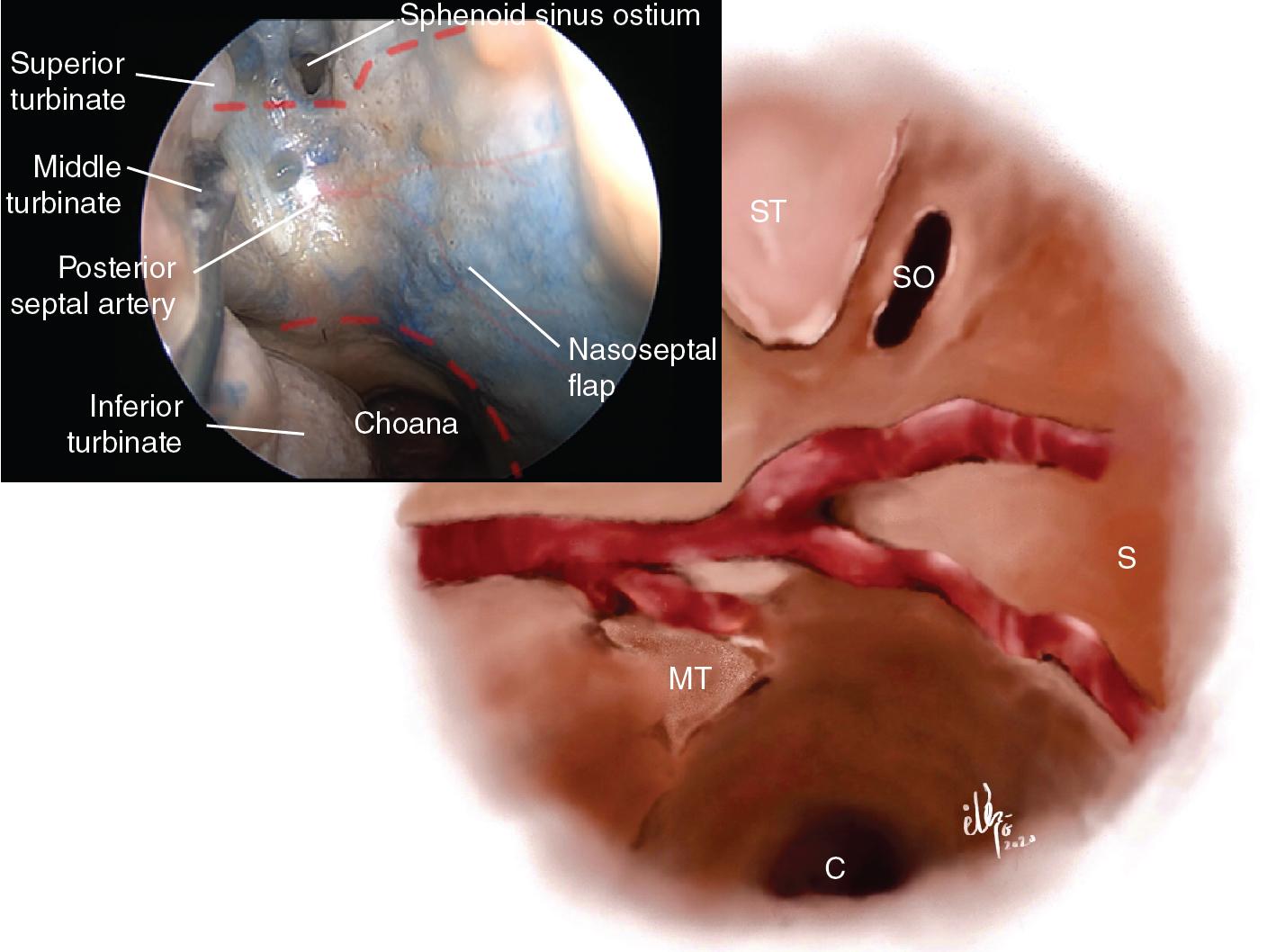Physical Address
304 North Cardinal St.
Dorchester Center, MA 02124
As endoscopic skull base surgery has evolved, the nasoseptal flap (NSF) has become the preferred vascular flap for the reconstruction of skull base defects. Similar to external approaches, the objectives of skull base reconstruction are to separate the sinonasal cavity from the sterile cranial cavity, to achieve a watertight closure of the dural defect, and to obliterate any dead space. After its seminal description by Hadad et al., the NSF was widely adopted because of its ability to achieve the aforementioned reconstructive goals, specifically reducing the rate of postoperative cerebrospinal fluid (CSF) leaks. Moreover, with a wide arc of rotation covering defects from the craniocervical junction to the frontal sinus, , the NSF proved to be instrumental in pushing the boundaries of endoscopic skull base surgery. This chapter discusses the surgical technique, surgical nuances, and outcomes of reconstruction of the skull base with the NSF.
The NSF is supplied by the posterior septal artery, a branch of the sphenopalatine artery. The posterior septal artery further bifurcates into superior and inferior branches as it crosses the rostrum of the sphenoid sinus in between the choana and the sphenoid os ( Fig. 29.1 ). Anatomic studies have found the posterior septal artery or its superior branch can run as close as 5 mm inferior to the sphenoid os.

Become a Clinical Tree membership for Full access and enjoy Unlimited articles
If you are a member. Log in here